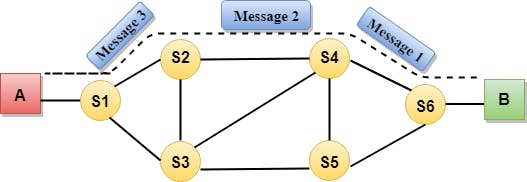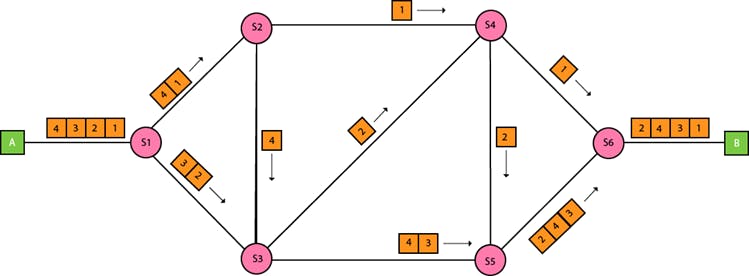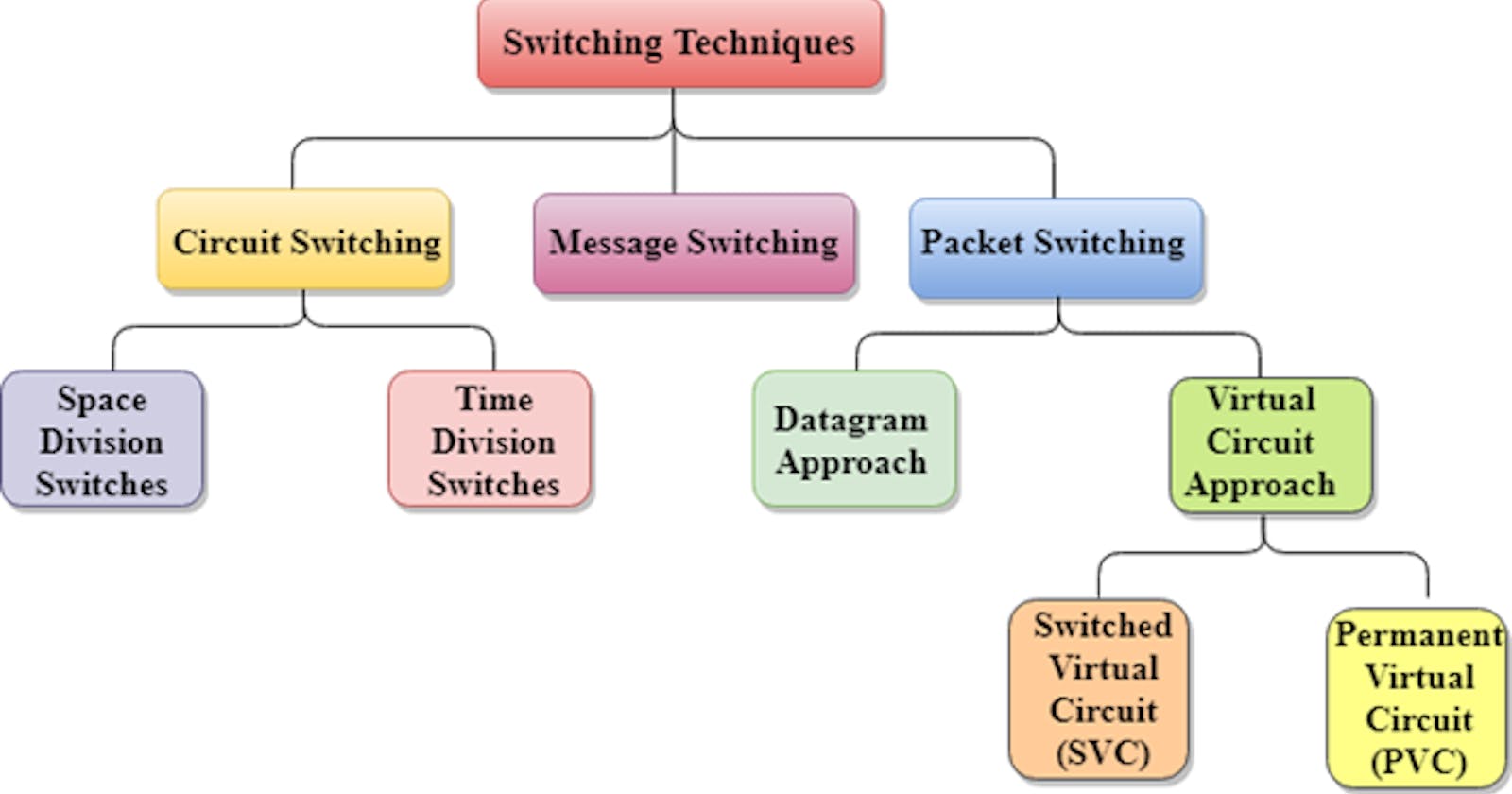Switching :
Switching in a computer network helps in deciding the best route for data transmission if there are multiple paths in a large network.
Switching technique is used to connect systems for making one-to-one communication.
Types of switching :
Circuit switching
Message switching
Packet switching
1. Circuit switching :
A dedicated path is established between the sender and receiver.
Before data transfer the connection will be established first.
Once the connection is established then the dedicated path will remain to exist until the connection is terminated.
It is used in public telephone network. It is used for voice transmission.

2. Message switching :
It is a store and forward mechanism.
Message is transferred as a complete unit and forwarded using store and forward mechanism at the intermediary node.
There is no establishment of a dedicated path between the sender and receiver.
It is not suited for streaming media and real-time application.

3. Packet switching :
In packet switching the message is sent all at once, but breaks it up into smaller parts that are transmitted separately.
The message splits into smaller pieces known as packets and packets are given a unique number to identify their order at the receiving end.
Packets will travel across the network, taking the shortest path as possible.
If any packet is missing or corrupted, then the message will be sent to resend the message.
If the correct order of the packets is reached, then the acknowledgment message will be sent.

